Although history and abandoned rail lines always seem to capture my interest, in a refreshing change of pace today we feature a brand new rail line in a country that up until earlier this month had no active rail service whatsoever. In this case, we’re talking about the Middle Eastern country of Qatar, where construction is happening at a frenzied pace in order to ready for 2022’s World Cup. Not only are new skyscrapers and stadiums being constructed, entire new cities are being built, and a futuristic driverless Metro will connect them all.
Initially, much of the plan for the Metro was based around Qatar’s bid for the 2016 Summer Olympic Games, but was revived in 2010 when Qatar was awarded the World Cup. The Qatar Railways Company was birthed in 2011, and will oversee the Metro, a new light rail in Lusail, and the planned long distance and freight routes to Saudi Arabia and Bahrain (which appears to be stalled, and the severing of ties between Qatar and its neighbors likely means it will be halted indefinitely).
Aesthetically, no matter where you travel through the system, you will ever be reminded that you are on the Doha Metro. The system itself has a unique identity, using locally-sourced sandstone for station exteriors, a nod to traditional architectural materials. Vaulted spaces evoke traditional Bedouin tents, stylized arched columns resemble the sails of time-honored dhow ships, and large panels of glass ensure that the stations will be lit by natural light, said to resemble the inside of an oyster. The visual cues continue on a line basis – as each will have their own identity and feature a distinctive wall finish and pattern. In the case of the Red Line (nicknamed the Coastal line, as it hugs Doha’s West Bay and terminates in the new planned city of Lusail), that pattern is iridescent mother-of-pearl, a reference to Qatar’s history of pearl diving.
The trains themselves were produced by Japan’s Kinki Sharyo, and are said to resemble Arabian horses. The three car fixed sets feature Gold class, with larger individual seats at 10 QAR (approximately $2.75 per trip) and family and standard classes, with typical subway style benched seating, at a price of 2 QAR (approximately 55 cents). Standard class trips are quite a bit cheaper than the Karwa bus service that operates in Doha, where a round trip ticket costs 10 QAR. For safety, station platforms have full-length barrier doors that only open when a train is ready for boarding. The system is fully driverless, and as a result the large windows at either end of the train are extremely popular with passengers to look out at the tracks ahead.
The Metro is a continuing work in progress, and as of the soft opening earlier this month, only 13 stations along the Red Line are currently open (10 underground, and 3 above ground). More stations along both ends of the Red Line are planned, along with a spur connecting Doha’s airport. Two other lines are currently under construction, the Green (Education) Line, as well as the Gold (Historic) line. Phase 1 of the system is planned to be complete for the World Cup and will have nearly 40 stations across the three lines, with central interchange point at Msheireb. A future Blue (City) line is also planned, and once fully realized, the Doha Metro is envisioned to have nearly a hundred operational stations.
All in all, I greatly enjoyed my visit to Qatar. Initially I had been fascinated with the city of Dubai, but many travelers to that city have stated that it feels a little “soulless” – they’ve given up much of their history to steam forward with glittery skyscrapers. In contrast, it seems that Qatar has found an interesting balance of ultra modern skyscrapers and planned cities, while respecting their rich history (take a visit to the traditional market Souq Waqif – you won’t be disappointed), and incorporating traditional elements in modern architecture, like on the Metro.


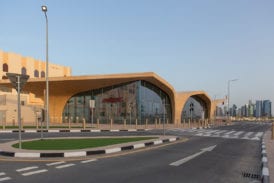
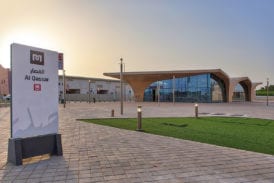
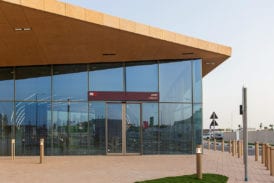
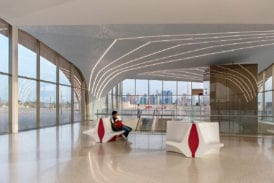
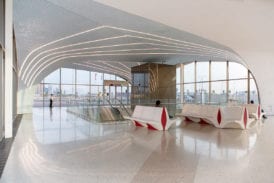
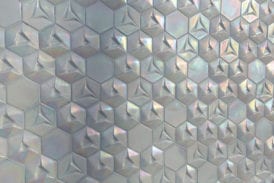
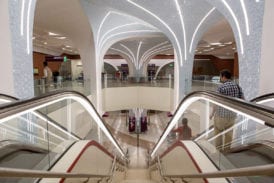
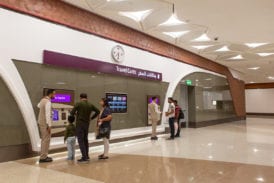
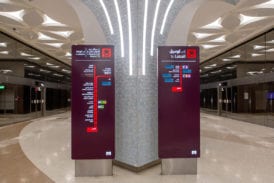
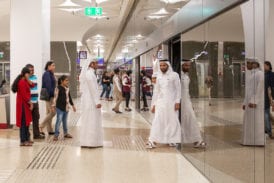
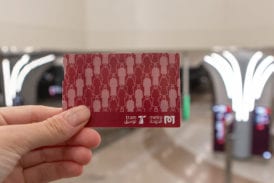
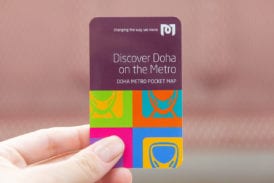
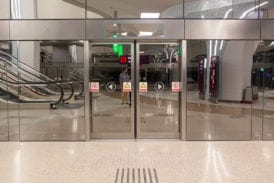
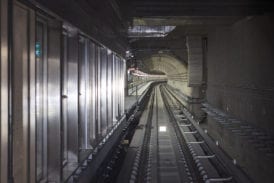
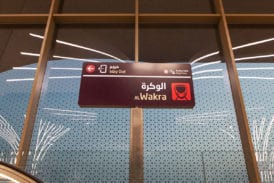
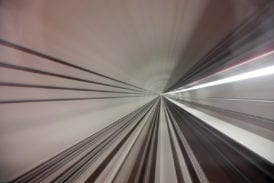
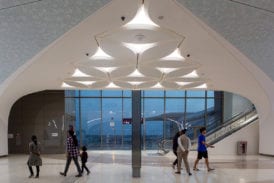
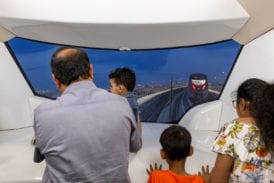
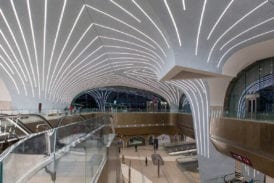
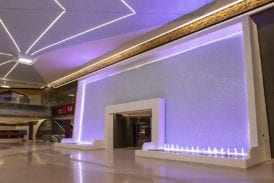
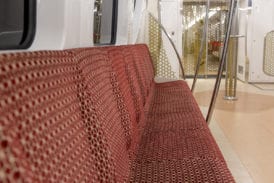
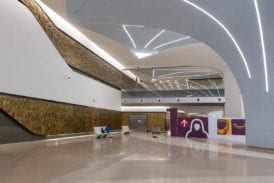
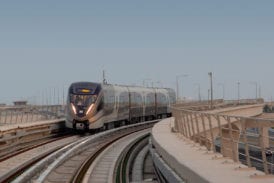
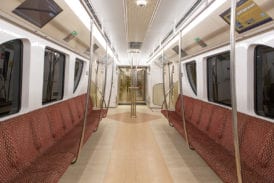
Hello again, Emily.
Always love your posts.
This looks like an amazing system. Thanks for the optical illusion.
I hope it doesn’t wind up like Chambers St. :-)
Best to you and good luck.
Does it have a segregated Women’s car like the Dubai Metro has?
No, only a first class (gold) section, a family section, and a general section.
Hi Emily, I came to your site looking for images and ended up reading posts which I enjoy. I would like to know if I may have your permission to use the image “Hudson Line tracks and the old MO tower under the yard’s bright nighttime floodlights” and/or the cross faded image at the top of that page with the old Sanborn map (3/13/15 post “Keeping the trains clean – A look back at Mott Haven Yard”). Thanks very much!
Phil
Wow that’s just amazing